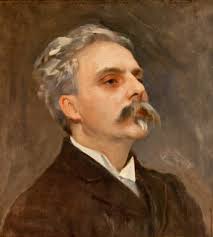Introduction:
Gabriel Fauré, a French composer of the late 19th and early 20th centuries, is widely regarded as one of the most influential figures in French music. Known for his delicate and emotive compositions, Fauré’s works spanned various genres, including chamber music, choral pieces, and symphonies. In this blog post, we embark on a melodic journey as we explore the 10 best compositions by the maestro himself.
- Requiem in D Minor: Fauré’s Requiem is a testament to his unique style and ability to infuse a sense of tranquility into the somber themes of death and mourning. With its delicate melodies and ethereal choral arrangements, this composition stands as one of Fauré’s most cherished works.
- Pavane: The Pavane, a gentle and graceful orchestral piece, is one of Fauré’s most recognizable compositions. Its hauntingly beautiful melodies and elegant orchestration have captivated audiences for generations, making it a staple in classical music repertoire.
- Élégie for Cello and Orchestra: Fauré’s Élégie is a poignant and introspective work that showcases his deep understanding of the cello’s expressive capabilities. The composition weaves together melancholic melodies with moments of sheer virtuosity, creating a truly moving listening experience.
- Sicilienne: Sicilienne is a charming and lyrical composition originally written as part of Fauré’s incidental music for a play. Its light and delicate character, evocative of a Sicilian dance, has made it a beloved piece in the classical repertoire, often performed as a standalone work.
- Nocturnes: Fauré’s Nocturnes, a series of lyrical and introspective piano pieces, demonstrate his mastery of the genre. These compositions are characterized by their expressive melodies, lush harmonies, and delicate pianistic textures, offering listeners a glimpse into Fauré’s emotional depth.
- Après un rêve: This beautiful song, originally written for voice and piano, showcases Fauré’s talent for creating evocative melodies. Après un rêve (After a Dream) explores themes of love, longing, and the ethereal nature of dreams, leaving a lasting impression on those who experience it.
- Ballade for Piano and Orchestra: Fauré’s Ballade is a grand and ambitious work that highlights his virtuosity as both a composer and pianist. With its intricate piano passages, lush orchestration, and dramatic narrative, this composition is a true gem of the Romantic repertoire.
- Masques et bergamasques: A delightful orchestral suite, Masques et bergamasques captures the playful and whimsical side of Fauré’s compositional style. Inspired by 18th-century music, this piece brims with lively melodies, intricate counterpoint, and a sense of joyous celebration.
- Berceuse for Violin and Piano: Fauré’s Berceuse is a tender and soothing lullaby-like composition that exemplifies his gift for crafting beautiful melodies. The interplay between the violin and piano creates a sense of intimacy and warmth, making it a cherished work among violinists and music enthusiasts.
- Piano Quartets: Fauré’s two piano quartets, Op. 15 and Op. 45, showcase his mastery of chamber music. These works seamlessly blend elegance, passion, and complexity, with each instrument contributing to a rich tapestry of sound. The piano quartets stand as a testament to Fauré’s skill in writing for small ensembles.
Conclusion:
Gabriel Fauré’s compositions continue to enchant audiences with their timeless beauty and emotional depth. From the ethereal Requiem to the intimate piano quartets, each of his works reveals a unique facet of his musical genius. By exploring these 10 best compositions, we have merely scratched the surface of Fauré’s immense contribution to classical music, inviting us to delve further into the enchanting world of his musical creations.


Comments are closed